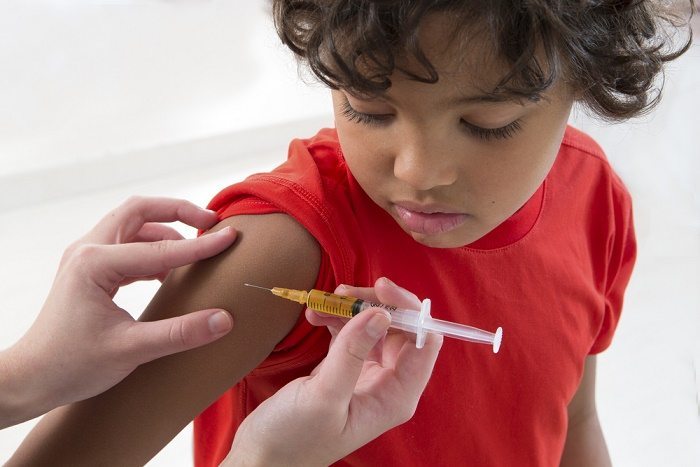New HPV Vaccine Protects Teens From at Least Four Kinds of Cancer
A study released Monday found that Gardasil 9, the newest version of the vaccine that protects against HPV, remains effective for years after it’s given to pre-teen and teen boys and girls.

A study released Monday in Pediatrics found that Gardasil 9, the newest version of the vaccine protecting against the human papilloma virus (HPV), remains effective for years after it’s given to pre-teen and teen girls and boys.
The study confirms that results found during clinical trials in adult women are applicable for young people as well, which is important because the Centers for Disease Control and Prevention (CDC) recommends these shots be given as part of routine vaccinations at age 11 or 12.
Dr. Stanley Block, co-author of the study, had conducted research on the earlier version of Gardasil and found that its protection lasted as long as eight years after the final dose of the vaccine had been given to teens and pre-teens. But similar research had not yet been done on Gardisil 9, which was just released in January.
“With little kids, preteens and teens, you have to show that the antibodies are as good or better than in adult women, whom we know efficacy data in,” Block told Forbes.
To test the continued efficacy of the latest vaccine, Block and his team gave 3,066 girls and boys ages 9-to-15 three doses of Gardasil 9. Just like with the previous vaccines, participants in the study got the second dose a month after the first and received the final dose six months later.
The researchers then checked the levels of antibodies for each of the nine strains of HPV that the vaccine covers. They found that more than 99 percent of the participants had sufficient antibody levels for all nine strains one month after the final dose.
Researchers continued to test the antibody levels for two and a half years and found the anti-HPV responses were persistent.
HPV is a group of more than 200 related viruses that can infect various parts of the body. There are 40 strains of the virus that are known to be spread through sexual activity, but not all are equally dangerous. Some will be cleared by the body without ever causing symptoms or health issues, but some cause genital warts and others lead to cancer of the cervix, vulva, anus, penis, or throat.
When Gardasil was first introduced in 2006, it provided protection against four strains of the virus: 6, 11, 16, and 18. Strains 6 and 11 cause almost all cases of genital warts, and 16 and 18 are thought to cause 70 percent of cervical cancer cases. Cases of cervical cancer are lower in the United States than elsewhere in the world thanks to widespread early screening methods (such as the Pap test) and the ability to treat changes to cells on the cervix before they become cancer.
Still, cervical cancer strikes about 12,000 women and kills about 4,000 in this country every year.
There are an estimated 3,000 new cases of HPV-associated anal cancers diagnosed in women and about 1,700 in men each year. And cases of head and neck cancers are thought to be on the rise because of HPV infections.
By adding protection against five additional cancer-causing strains (31, 33, 45, 52, and 58), Gardasil 9 has the potential to prevent 90 percent of cases of all cervical, vulvar, vaginal, and anal cancer. And there is reason to believe that it will help prevent oral cancers caused by HPV as well.
“We have four cancers we know this vaccine is going to prevent and one cancer we know it should prevent. You’re preventing five cancers for your child,” Block told Forbes. “Do I need to say anything more?”
The study also had good news for parents who might be reluctant to get their children vaccinated because of reports of adverse reactions. It found the shots were well tolerated by both boys and girls. Minor reactions can include pain, redness and swelling at the injection site, a mild fever, headache, and fainting.

